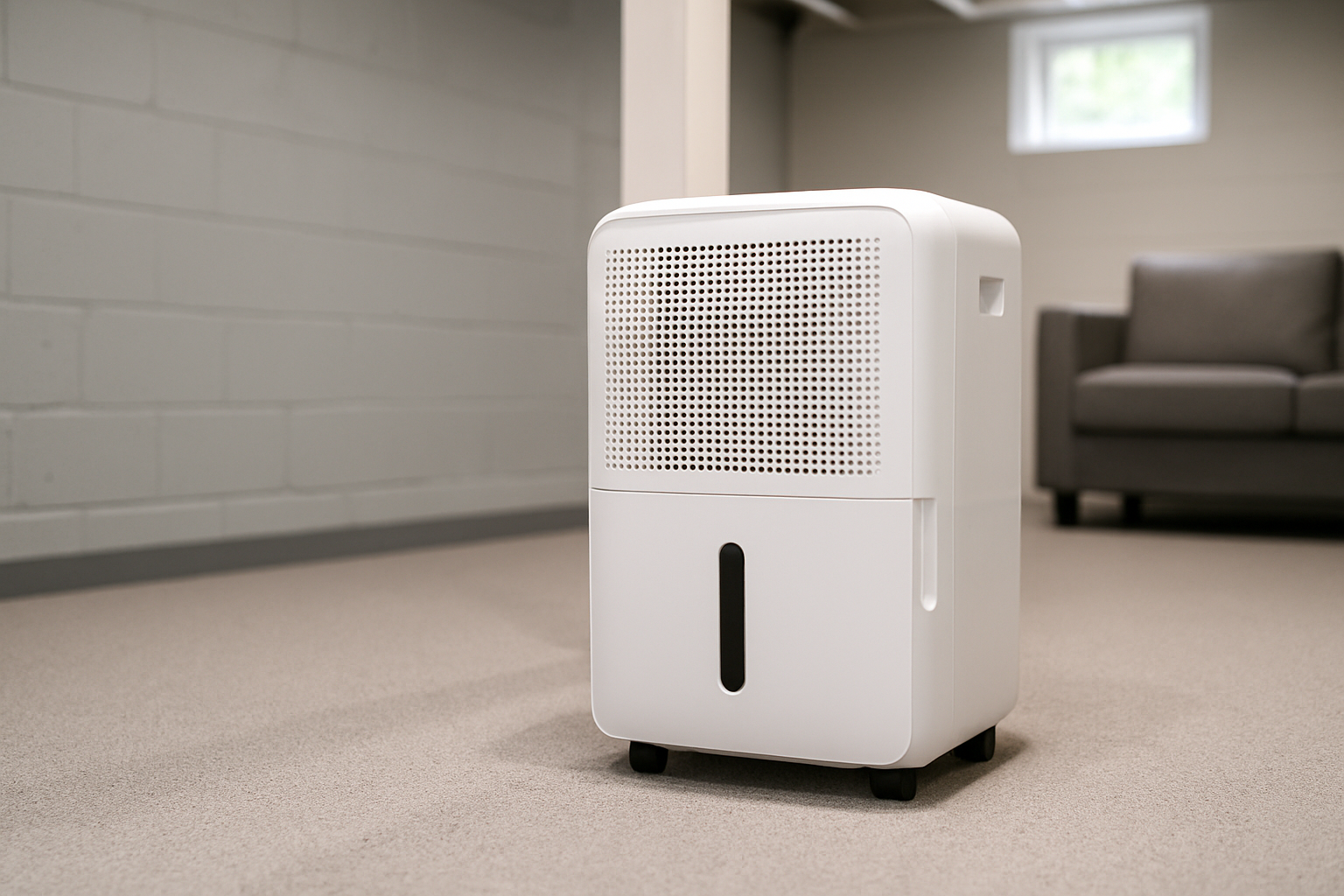That stale scent spread fast. It move from room to room. It cling to furniture clothe and carpet. The longer it stays the worse it get.
This kind of smell also points to a deeper issue. Mold often hide behind wall or under flooring. Moisture seep in through crack pipe or soil. These problem do not go away on their own. They grow worse with time. They damage your home and your health.
You need to act quickly. Ignoring it we not help. Covering the smell we not solve the root problem.
This guide shows every step you need. You will learn how to find the cause fix the damage and keep your basement clean. These step protect your air your home and your peace of mind.
What Cause That Musty Smell?
Mold and mildew grow where moisture sit. Your basement trap damp air. The smell spread because the air stays still.
The most common sources include:
-
Leaky windows or doors
-
Plumbing from upstairs
-
Groundwater leaks through walls
-
Dry sink traps that let in sewer gas
-
Old carpet or furniture full of odors
You should find the cause before anything else. That the only way to solve the problem for good.
Step 1: Look for the Source
Start inside. Check every wall, corner, and floor. Press your hand along baseboards. Feel for damp spot. Shine a flashlight behind furniture and in dark corner. Wet patche often hide where you least expect them.
Touch around windows and doors. If you feel cold air or moisture water might be getting in. Also look for stain peeling paint or soft drywall. These sign point to leak.
Check the pipes. Follow each one with your hand. See if any feel wet or sweat when the air get humid. Look under sinks and near water heaters.
If you do not see anything obvious test your floor drain. A dry drain lets sewer gas creep up into the room. That can make the whole basement smell musty. Pour a few cups of water into each drain. Do the same for unused sinks. Refill the trap so it seals the pipe.
Then turn your focus to soft surfaces. Smell hide in carpet padding cushion and upholstery. Pet stain spilled drink and damp fabric can hold odor for month. Even if the floor feel dry the smell may still come from under the surface.
Go outside next. Walk around your home. Look at how the land slopes. If the ground tilts toward the basement, rainwater flows right into the foundation. That moisture builds pressure and finds its way inside. It does not need a big crack.
Keep note as you check. Mark each spot that looks wet or smells strong. You’ll need those details to fix the root problem.
Step 2: Fix the Problem Areas
Repairs come next. That smell won’t leave unless you stop the leaks.
Here are common fixes:
-
Seal around doors and windows
-
Replace cracked pipes
-
Wrap cold water lines to stop pipe sweat
-
Fix outside grading so water drain away
-
Install a French drain or sump pump if need
-
Apply waterproof coatings to basement walls
You must deal with soaked drywall and insulation. Mold hides in those spots. Remove damaged materials instead of trying to clean them.
Some fixes may need a pro. Hire a contractor if leaks remain hidden or too big to manage.
Step 3: Dry the Air
Moist air causes problems. It feeds mold. It spreads odor. It make the basement feel damp and sticky. Even after repair moisture in the air keep the smell alive.
You need to dry it out. A dehumidifier handle that job. It pull water from the air and trap it in a tank. You can empty the tank by hand or attach a drain hose. Some units let you run a hose straight into a sink or floor drain. That saves time.
Choose a model made for basements. Those units work well in cool, damp spaces. Place it near the center of the room. Shut the window and door to keep the air sealed.
Watch the numbers. Use the built in display or a separate humidity meter. That level feel comfortable and clean. Mold start growing again when humidity hits 60 percent or more.
Run the dehumidifier every day. Let it work nonstop if the air still feels heavy. Once the smell fades, you can reduce the run time. Just make sure levels stay below that danger line.
This step matters. Dry air blocks mold. It stops the musty smell from coming back. It also makes your basement easier to use and easier to breathe in.
Step 4: Remove the Odor
Step 5: Keep the Air Fresh
The smell should fade within days. Keep it away with regular care.
Here’s how:
-
Run the dehumidifier every day
-
Keep sink traps full of water
-
Check for new leaks once a week
-
Deep clean rugs every season
These habits protect your basement. They also stop mold and odor before they spread.
Final Thought
A musty basement points to bigger problems. The smell warn you about mold, trapped moisture or stale air. It may seem small at first. Over time it get worse.
You need a clear plan. Start by finding where the smell comes from. Fix every leak. Dry the air. Clean every surface that holds odor. Then stop the moisture from coming back.
These steps work if you stay consistent. You don’t need expensive gear. You need focus quick action and simple tool. Small effort make a big difference.
A fresh basement feel clean and safe. It adds value to your home. It also protects your health. You can enjoy the space again without holding your breath.
Take the first step today. The sooner you start the faster the smell goes away.




